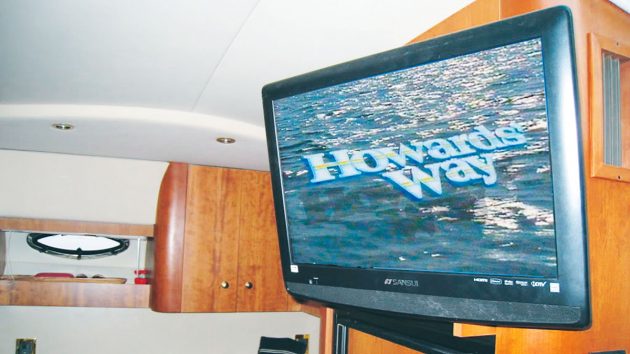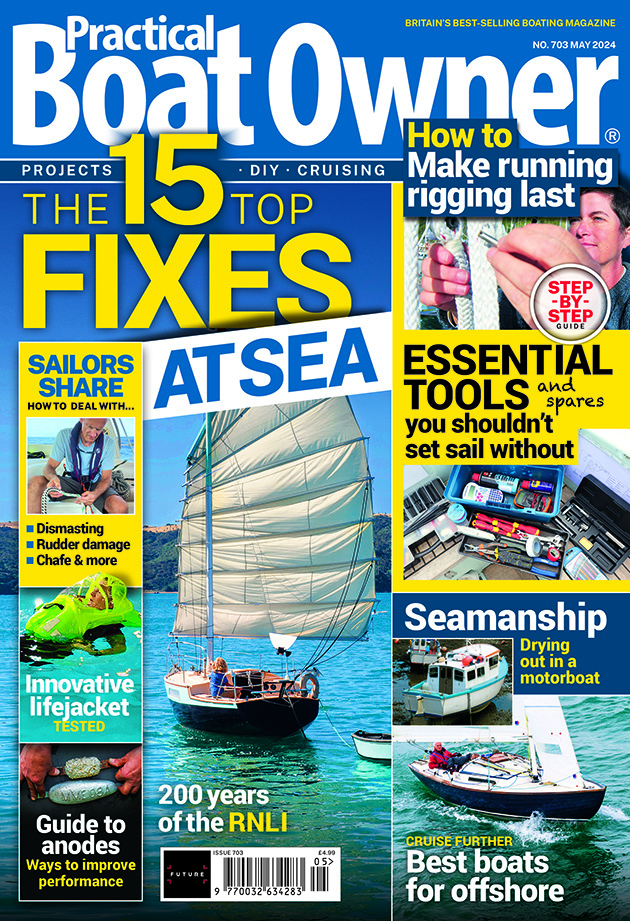Charles Beddingfield has a TV on his boat but is struggling to get a decent reception. PBO expert James Turner has the answer
Here’s a boating problem I hope your experts might be able to help with. Boating mostly single-handed I often watch TV on board the Tudor Rose to fill an idle evening.
I have a tablet with a TV app that receives ordinary broadcast Freeview, and it has a signal pre-amp.
This works fine in a static setting such as a stationary motorhome or caravan where the aerial can be moved to find a good signal.
But in a boat at anchor the signal is unreliable because the boat moves about, generally in a figure-of-eight pattern.

Charles Beddingfield wants to get better TV reception aboard his motor cruiser Tudor Rose. Credit: Charles Beddingfield
It is not a directional issue, like a portable radio set, because I use an omnidirectional aerial that receives signals from any direction.
Rather, it seems that the signal radiates, or is shaded into ‘fingers’ with null gaps between, so that as the boat moves about the aerial is continually moved into and out of the signal.
I’ve tried using multiple aerials placed about the boat in the hope one of them would always be in a signal finger but so far have had no success with this setup.
I wonder if anyone has a good answer to this problem? Is there a correct way to connect multiple TV aerials to feed one receiver?
Charles Beddingfield
James Turner, of YouTube channel Boating Equipment Reviews responds:
A good omnidirectional TV antenna should always cope with the boat moving around at anchor. That’s what they’re designed for.
Sadly, there are some antennae on the market that aren’t very good when the signal quality drops, either because of range or terrain interference.
While omnidirectional antennas have boosters in them, they are tasked with working all around the horizon, and because of that, they’re no more powerful overall than directional antennas (like on a house) which focus the beam in one direction.

Shakespeare Marine’s SeaWatch antennas are omnidirectional and will receive local HD broadcast signals
You don’t mention the make of your antenna, but the first action I’d recommend is to buy a bigger one, the biggest you can fit/afford.
Shakespeare Marine makes three different sizes, and the biggest one will perform far better in sub-optimal conditions than any of the little ones.
Continues below…
Small may be cute, but big works better.
The science behind this is that with range and obstructions, the received signal goes down compared to the surrounding noise interference.
You may have heard the expression ‘signal to noise ratio’.
The bigger the antenna, the better it copes as the signal decays and the noise increases.
Enjoy reading TV on a boat: how to improve reception?

A subscription to Practical Boat Owner magazine costs around 40% less than the cover price.
Print and digital editions are available through Magazines Direct – where you can also find the latest deals.
PBO is packed with information to help you get the most from boat ownership – whether sail or power.
-
-
-
- Take your DIY skills to the next level with trusted advice on boat maintenance and repairs
- Impartial in-depth gear reviews
- Practical cruising tips for making the most of your time afloat
-
-
Follow us on Facebook, Instagram, TikTok and Twitter





